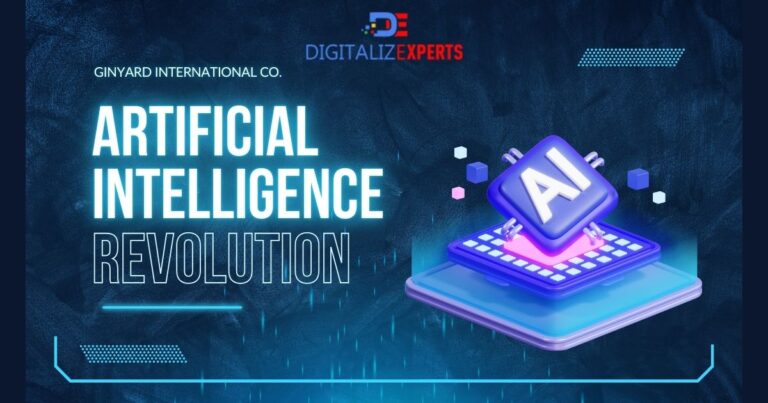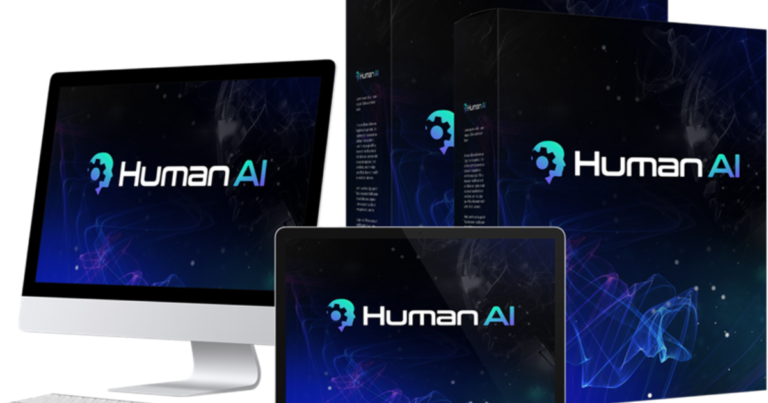Key Highlights
- Artificial intelligence (AI) has evolved into different types: Reactive Machines, Limited Memory, Theory of Mind, and Artificial Superintelligence, each offering unique capabilities.
- Machine learning models and deep learning have been pivotal in advancing the field of AI, enabling systems to mimic human intelligence.
- Reactive AI like IBM Deep Blue focuses on specific tasks without memory, while Limited Memory algorithms improve decisions using historical data.
- Theoretical models, such as Artificial General Intelligence and Theory of Mind AI, aim to replicate human cognitive abilities.
- Use cases span industries like customer service, self-driving cars, and virtual assistants, showcasing the practical relevance of various AI models.
Understanding types of AI by their capability and functionality helps businesses and individuals unlock AI’s potential.
Introduction
Artificial intelligence (AI) has transformed how we approach technology by simulating human intelligence to perform a wide range of tasks. With advancements in machine learning, AI capabilities have reached extraordinary levels, offering solutions to problems across industries. Understanding the different types of AI is key to navigating this rapidly evolving field. From Reactive Machines to Artificial Superintelligence, the categories of AI reveal not only how machines learn but also how they impact our lives. Let’s explore these types and their significance.
Overview of Artificial Intelligence Technology
Artificial intelligence combines various technologies, including machine learning and deep learning, to replicate human intelligence and enhance decision-making. These AI models operate by processing complex data sets to generate insights or complete tasks, elevating their role in modern-day operations.
The rapid pace of technological advancements ensures that the field of AI remains dynamic. Powered by artificial neural networks and other tools, modern AI applications achieve feats from speech recognition to predictive analytics. As we increasingly rely on such systems, their impact continues to grow.
Defining Artificial Intelligence
Artificial intelligence (AI) is a branch of computer science centered on creating systems capable of performing tasks that traditionally require human intellect, such as reasoning, learning, and decision-making. By drawing inspiration from human cognitive abilities, AI aims to replicate processes like problem-solving and adapting to new information.
AI systems rely on natural language processing (NLP) to interpret data, empowering machines to understand and generate human language. Modern AI spans multiple domains, blending statistical analysis with computational power to achieve seemingly intelligent results.
This field’s evolution has led to groundbreaking advancements, allowing machines to tackle complex challenges. From mastering the chessboard to enabling intricate medical diagnostics, AI continues bridging the gap between human-like thinking and computational processes. Today’s AI reflects not just automation but an ongoing attempt to simulate human intelligence at increasingly refined levels.
Evolution and Significance of AI in India
The evolution of AI in India mirrors its global expansion. From basic automation to intricate AI systems, the growth has impacted fields like data science, healthcare, and agriculture. AI adoption has surged as Indian industries aim to enhance operational efficiency and customer service.
AI’s transformative potential in India is evident in its application across sectors. For instance, in healthcare, AI-powered diagnostics help improve patient outcomes by analyzing vast amounts of data. In agriculture, machine learning supports sustainable farming practices.
India’s dynamic technology ecosystem has also contributed to advancements in AI. With a skilled workforce and supportive policies, the nation plays a crucial role in shaping the global AI landscape. AI continues to revolutionize Indian industries, offering solutions that cater to both complex challenges and everyday needs.
Understanding the Four Types of AI
Artificial intelligence is broadly categorized into four types based on functionality: Reactive Machines, Limited Memory, Theory of Mind, and Artificial Superintelligence. These classifications highlight AI’s ability to process information and respond to its surroundings.
Each type operates at a specific level of complexity, from Reactive Machines that focus on singular tasks to the yet-unrealized Artificial Superintelligence capable of surpassing human thought. Understanding these distinctions helps clarify how AI systems evolve and why they are integral to modern advancements.
Classification Criteria: Capability vs. Functionality
AI can be classified based on two main criteria: capability and functionality. Capability focuses on the extent to which AI replicates human intelligence, while functionality emphasizes its operational methods. Let’s clarify this comparison:
| Classification Criteria | Definition | Examples |
| Capability | Extent of intelligence replication | General AI, Superintelligent AI |
| Functionality | Practical working mechanisms | Reactive AI, Limited Memory |
Narrow AI, for instance, excels only at specific tasks under tightly defined conditions, while theoretical models like Strong AI promise versatility in solving diverse challenges. By grasping these classifications, you better understand AI’s strengths, applications, and limitations. This clarity aids in identifying the most relevant AI system for a given task or sector.
Practical Relevance of Each Type
Each type of AI serves specific real-world purposes, which makes them integral across sectors:
- Reactive AI: Best for straightforward, predefined tasks like IBM Deep Blue’s chess gameplay analysis.
- Limited Memory AI: Powers dynamic tools like self-driving cars, virtual assistants, and chatbots through its ability to learn from past data.
- Theory of Mind AI: Still in its experimental phase, this type aims for human-like emotional understanding, offering promise for applications such as companion robots and interactive platforms.
- Artificial Superintelligence: Theoretical but envisioned to surpass human intelligence in reasoning and creativity, possibly propelling significant societal advancements.
These systems address unique needs, from enhancing customer service interactions to fine-tuning autonomous navigation. For businesses and industries, understanding AI’s practical applications is essential in leveraging its capabilities effectively.
Reactive Machines: The First Stage of AI
Reactive Machines represent the most basic form of artificial intelligence, designed to perform specific tasks without memory retention. This type of AI responds solely to current inputs, making decisions in real time based on statistical algorithms.
A notable example is IBM Deep Blue, the supercomputer that famously defeated chess grandmaster Garry Kasparov in the 1990s. By analyzing the chessboard and evaluating possible future moves, it exemplified the reactive AI’s capabilities. Unlike advanced systems, it lacked the ability to learn from its actions.
How Reactive Machines Work
Reactive machine AI operates by assessing real-time data to generate seemingly intelligent outputs. It does not store historical data, focusing entirely on responding to the present context.
Using training data, these systems are exposed to vast datasets to develop algorithms that enhance decision-making. While this may mimic intelligence, the inability to “learn” distinguishes it from higher-level AI. Instead, reactive machines excel in rapid data evaluation.
Their function often stems from statistical math, ensuring reliable outputs for tasks requiring precision. However, they are limited in scale.
Real-World Examples in Indian Industries
In Indian industries, Reactive Machines have found diverse applications:
- Customer Service: Virtual assistants using reactive models improve query resolution.
- Google Maps: Traffic predictions based on live data.
- Utility Management: Basic automation across various segments removes inefficiencies.
Their use highlights how foundational AI systems like reactive machines bring value through highly efficient, targeted tasks. While limited in cognition, they remain essential in numerous practical scenarios.
Limited Memory AI: Learning from Experience
Limited memory AI represents a significant evolution in artificial intelligence, allowing systems to learn from historical data and experiences. Unlike purely reactive machines, this type of AI utilizes machine learning models to adjust its behavior based on new inputs, enabling more sophisticated responses in different situations. By leveraging vast chunks of training data, limited memory AI can refine its algorithms and improve performance over time. This capability drives applications ranging from self-driving vehicles to advanced virtual assistants, showcasing its transformative potential.
Key Features and Applications
Limited memory AI integrates historical data to inform present decisions, enhancing its ability to learn from experiences. Key features include the use of machine learning models and advanced algorithms that mimic human-like cognition. Applications span diverse sectors, such as customer service through virtual assistants and image recognition capabilities in security systems. These AI systems leverage neural networks to analyze vast datasets, ultimately enabling more accurate predictions and improved efficiencies across industries, driving innovation in the current state of AI.
Use Cases Across Sectors in India
Diverse sectors in India are leveraging AI technology to enhance efficiency and productivity. In healthcare, predictive analytics harness vast amounts of data for early disease detection. Financial services utilize machine learning models for fraud detection and risk assessment, while retail sectors implement AI-driven recommendation engines to personalize customer experiences. Furthermore, transportation sectors benefit from AI-enabled logistics solutions, optimizing routes and minimizing costs. These use cases not only improve operational capabilities but also pave the way for the evolution of AI across industries.
Theory of Mind AI: Towards Human-Like Understanding
Recognizing the nuances of human emotions and motivations marks a pivotal step in artificial intelligence development. Theory of mind AI endeavors to transcend current machine learning models, involving deep neural networks capable of understanding context and inferring intentions. This level of AI strives to mimic cognitive abilities akin to those of the human brain, ideally enabling AI systems to engage in complex social interactions. Advancements here could redefine sectors like mental health and customer service, fostering a more empathetic AI.
Conceptual Foundations and Current Research
The conceptual foundations of theory of mind AI emphasize understanding and replicating human cognitive abilities. Research in this domain seeks to unravel the complexities of human emotions and motivations, allowing AI systems to predict behaviors in various contexts. Current advancements leverage deep learning and neural networks to simulate this understanding, enabling machines to interact with humans in a more intuitive manner. As theories evolve, further exploration is necessary for creating AI that engages in social reasoning and emotional intelligence.
Potential Impact on Indian Society and Businesses
Societal transformation in India is underway as AI technologies penetrate various sectors, enhancing efficiency and driving innovation. Businesses leverage machine learning and generative AI to predict market trends, optimize operations, and personalize customer experiences. As AI systems become more adept, they facilitate significant advances in agriculture, healthcare, and education, improving decision-making and resource management. The integration of these technologies promises to create new job opportunities, yet it also necessitates a skilled workforce capable of harnessing their potential responsibly and ethically.
Conclusion
The continuous evolution of AI technology reveals an exciting landscape where various types of AI, from limited memory systems to advanced theories of mind, are converging to enhance human experiences. A deeper understanding of these technologies fosters innovation across sectors while addressing challenges associated with their implementation. The potential impact stretches far beyond mere automation; it promises to reshape industries and societal frameworks, ultimately increasing efficiency and expanding the capabilities of artificial intelligence in ways previously only dreamed of in science fiction.
To Read more Article click : Top 5 Best AI Voice Generators in 2025






